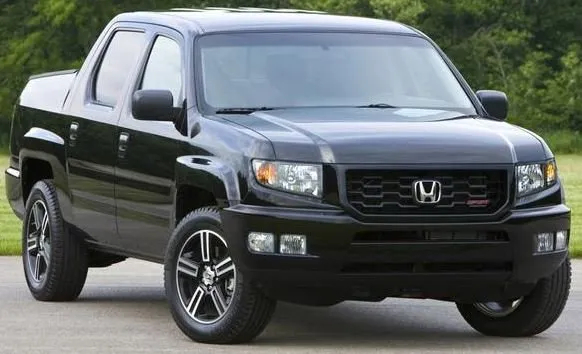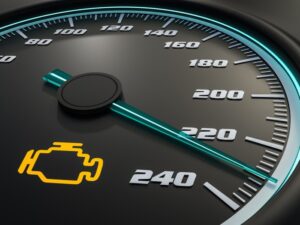
When it comes to automobiles, Honda is a renowned brand that is synonymous with reliability and performance. One crucial component that plays a significant role in the smooth functioning of a Honda vehicle is its transmission system. In this article, we will delve into the world of Honda transmissions, exploring their types, functionality, maintenance, and common issues. Whether you are a Honda owner or simply curious about automotive engineering, this guide will provide you with valuable insights into Honda transmissions.
Honda Transmissions: An Overview
Honda offers a diverse range of transmissions designed to cater to different driving preferences and vehicle types. Let’s explore some of the commonly found transmissions in Honda vehicles.
Continuously Variable Transmissions (CVT)
CVTs are a popular transmission type known for their seamless acceleration and enhanced fuel efficiency. Honda has implemented CVTs in many of its models, allowing for smooth gear transitions and optimal engine performance. The CVT technology adjusts the gear ratio continuously, providing a comfortable and efficient driving experience.
Dual-Clutch Transmissions (DCT)
Dual-Clutch Transmissions combine the best features of manual and automatic transmissions. These advanced systems use two separate clutches to engage odd and even gears independently, resulting in lightning-fast gear changes. Honda’s DCTs are often found in sportier models, delivering an engaging and responsive driving experience.
Automatic Transmissions
Automatic transmissions are widely popular for their ease of use and convenience. Honda’s automatic transmissions offer smooth shifting, allowing drivers to focus on the road without the hassle of manual gear changes. These transmissions utilize hydraulic systems and torque converters to ensure a seamless power delivery.
Manual Transmissions
For enthusiasts who prefer a more hands-on driving experience, Honda offers manual transmissions in select models. Manual transmissions allow drivers to have full control over gear selection, providing a direct connection between the driver and the vehicle. Honda’s manual transmissions are known for their precise shifting and engaging driving dynamics.
How Honda Transmissions Work
To understand how Honda transmissions function, it is essential to grasp the fundamental components and their roles within the system.
Transmission Components and Their Functions
A Honda transmission comprises various components, including gears, clutches, torque converters, and the transmission control module (TCM). Gears facilitate the transfer of power from the engine to the wheels, enabling different speed ratios. Clutches engage and disengage gears, while the torque converter ensures smooth power transmission between the engine and the transmission. The TCM monitors various parameters and controls the shifting process for optimal performance.
The Role of Gears and Clutches
Gears play a crucial role in Honda transmissions, allowing drivers to adjust the vehicle’s speed and power delivery. Depending on the model, Honda transmissions may have different gear ratios to suit various driving conditions. Clutches, on the other hand, are responsible for engaging and disengaging gears, ensuring smooth transitions between different speed ratios.
Transmission Fluid and Cooling
Transmission fluid plays a vital role in lubricating and cooling the transmission system. It helps reduce friction, prevents wear and tear, and dissipates heat generated during operation. Regularly checking and changing the transmission fluid is essential to maintain optimal performance and prevent potential damage to the transmission components.
Maintaining Your Honda Transmission
Proper maintenance is key to ensuring the longevity and reliability of your Honda transmission. Here are some essential maintenance practices to follow:
Regular Fluid Checks and Changes
Regularly inspecting and changing the transmission fluid is crucial for optimal performance. Consult your vehicle’s owner’s manual for the recommended fluid type and interval. Adequate fluid levels and clean fluid contribute to smooth gear shifts and protect against premature wear.
Proper Driving Habits for Transmission Health
Adopting good driving habits can significantly impact the health of your Honda transmission. Avoid sudden and aggressive acceleration, as it puts unnecessary strain on the transmission components. Additionally, allowing the transmission to warm up before pushing the vehicle to its limits can minimize wear and tear.
Signs of Transmission Problems
Being aware of potential transmission issues is essential for early detection and prompt resolution. Look out for warning signs such as slipping gears, delayed engagement, unusual noises, or fluid leaks. If you notice any of these symptoms, it is recommended to have your Honda vehicle inspected by a qualified technician.
Common Honda Transmission Issues
While Honda transmissions are generally reliable, certain problems may arise over time. Here are some common transmission issues to be aware of:
Transmission Slipping
Transmission slipping refers to a situation where the transmission fails to stay in the selected gear or shifts unexpectedly. It can occur due to worn-out clutch plates, low transmission fluid levels, or internal component damage. Timely diagnosis and repair are essential to prevent further damage to the transmission.
Delayed Engagement
Delayed engagement occurs when there is a noticeable delay in gear engagement after shifting. It can be caused by a variety of factors, such as a faulty transmission solenoid, damaged clutch, or low fluid levels. Prompt inspection and repair are necessary to prevent potential transmission failure.
Shifting Problems
Shifting problems can manifest as difficulty in changing gears, rough or jerky shifts, or the transmission getting stuck in a particular gear. These issues may arise due to worn-out synchronizers, damaged shift forks, or clutch problems. Addressing these problems early on can prevent further damage to the transmission system.
Transmission Fluid Leaks
Transmission fluid leaks can lead to a drop in fluid levels, resulting in poor transmission performance and potential damage. Leaks can occur due to worn-out seals, damaged gaskets, or loose connections. It is important to identify and fix the source of the leak promptly to maintain the transmission’s integrity.
Upgrading Honda Transmissions
If you’re seeking to enhance the performance of your Honda vehicle, there are various options available for upgrading the transmission system.
Performance Enhancements
Performance-oriented Honda models may offer upgraded transmissions designed to handle higher power outputs. These transmissions often feature reinforced components, optimized gear ratios, and improved cooling systems to withstand increased performance demands.
Aftermarket Transmission Options
The aftermarket industry provides a wide range of transmission upgrades and replacements for Honda vehicles. Whether you’re looking for improved durability, enhanced shifting performance, or specialized applications, aftermarket options offer a tailored solution to meet your specific requirements.
Conclusion
Honda transmissions are a crucial component of their vehicles, contributing to their reputation for reliability and performance. Understanding the different types of Honda transmissions, how they work, and proper maintenance practices is essential for maximizing their lifespan and ensuring smooth operation. By following the maintenance tips outlined in this guide and promptly addressing any issues that arise, you can enjoy a trouble-free driving experience with your Honda vehicle.
Frequently Asked Questions (FAQs)
Can I tow a trailer with a Honda vehicle?
Yes, Honda vehicles are capable of towing trailers. However, it is important to consult your vehicle’s owner’s manual for the specific towing capacity and guidelines to ensure safe towing practices.
How often should I check my transmission fluid?
It is recommended to check your Honda vehicle’s transmission fluid regularly, preferably during routine maintenance intervals. Consult your owner’s manual for the recommended frequency and procedure.
Are Honda transmissions covered by warranty?
Honda transmissions are typically covered by a manufacturer’s warranty for a specified period or mileage. Warranty coverage may vary, so it is advisable to review the warranty terms provided by Honda for your specific vehicle.
Can I replace my Honda transmission myself?
While it is technically possible to replace a Honda transmission yourself, it is a complex and labor-intensive task that requires specialized knowledge and tools. It is generally recommended to seek professional assistance to ensure proper installation and functionality.
Are there any recalls or known issues with Honda transmissions?
Honda has had some recalls and known issues related to transmissions in the past. It is advisable to check the Honda website or contact your local Honda dealership to inquire about any recalls or service campaigns relevant to your vehicle.






